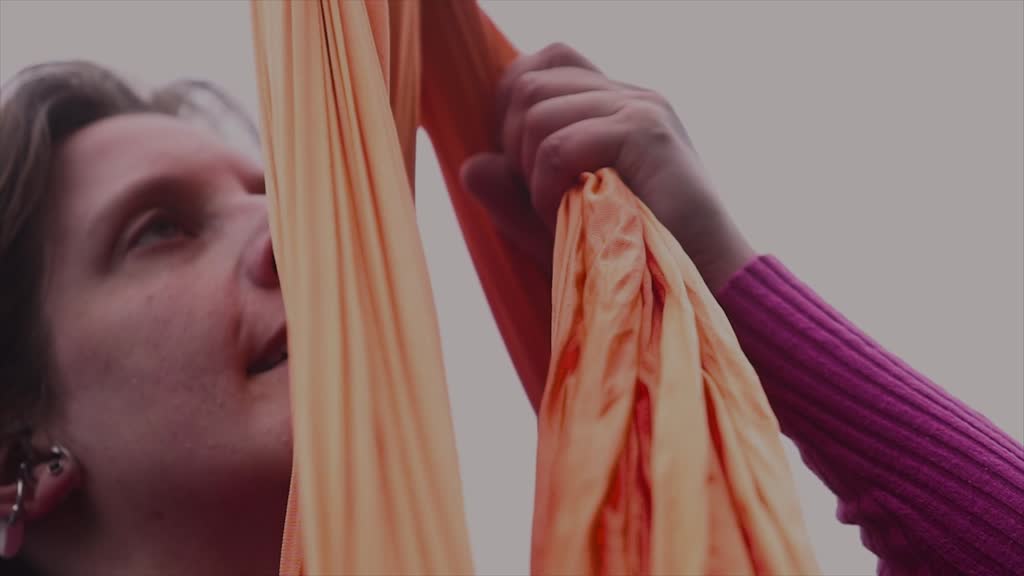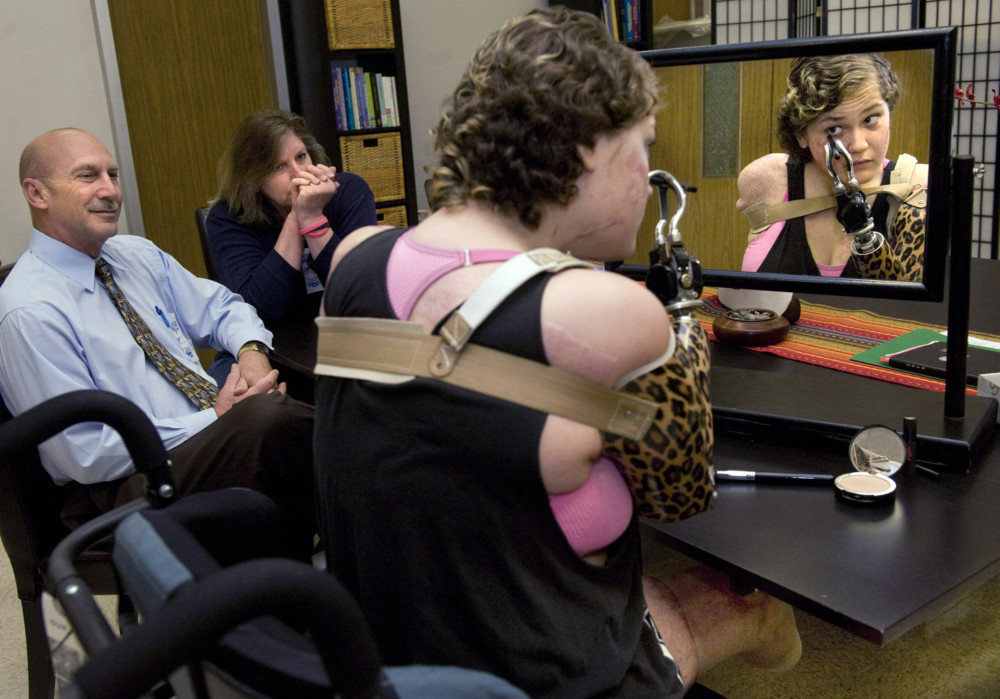By Debbie Kelley
The Gazette (Colorado Springs, Colo.)
WWR Article Summary (tl;dr) Seventh- and eighth-grade students at Janitell Middle School created a custom-designed gripping tool for a 9 year old student who is suffering from condition that makes it difficult to write.
COLORADO SPRINGS, Colo.
By the end of the school day, 9-year-old Natalie Quintana is worn out from writing.
Arthrogryposis, a congenital condition that contracts joints and weakens muscles, makes it hard to make a pencil dance across paper.
But a custom-designed gripping tool that seventh- and eighth-grade students at Janitell Middle School created for Natalie’s right hand is making a big difference.
“It helps me write,” says Natalie. “I like that it keeps my hand supported and doesn’t keep my arm up, so I write better.”
Natalie’s disability affects all four limbs, leaving her fingers and wrists curved inward. Braces help keep her legs straight in her wheelchair.
The awkward positioning of her hand and arm elevates Natalie’s shoulder and tires her, said Jaimie Hunsicker, an occupational therapist for Widefield School District 3, “She currently has to rotate her hand, and we’re concerned about fatigue, as she gets older and has to write more at school,” said Hunsicker. “That’s why we’re trying to deal with this now.”
Despite her physical limitations, Natalie’s spirits are high.
“She’s a little diva,” jokes her mom, Michelle Castillo.
Natalie, a fourth-grader at French Elementary School in Security/Widefield aspires to be a meteorologist and loves to read and write.
“She seems to be motivated by the pencil grip,” her mom said. “It’s great they were able to do something for her.”
Over the summer, Natalie practiced with the plastic purple instrument that has a ring for her thumb and space for her index and middle finger to rest on top.
Using a pencil held in the grip, she’s been finding her way through mazes on paper and doing other fun activities.
The invention can be chalked up to brilliant serendipity.
Hunsicker had been trying to find a way to help Natalie overcome her struggles.
“We went through a lot of commercial grips, but they didn’t work,” she said.
Hunsicker was talking about her frustration at dinner one night, when her daughter, who was an eighth-grader at Janitell, suggested running the problem by one of her teachers, Curtis Esch. He teaches an elective modeling and design class that’s part of the national science, technology, engineering and math curriculum called Project Lead the Way.
Esch embraced the challenge.
“It was a huge connection to the real world,” Esch said. “It was amazing we were able to help a real person instead of a fictional scenario we were working on in class.”
Students in the class learn about designing model prosthetics, such as a therapeutic boot for a child with cerebral palsy, and toys for disabled children to improve dexterity and motor skills.
All 30 students in Esch’s class last semester brainstormed solutions for a pencil grip for Natalie. About one-third of the class submitted a design for consideration, Esch said.
Modeling clay helped develop prototypes, and Natalie tested each one. A software design program and a 3-D printer led to a final product, which is still being fine-tuned.
“We used the engineering process to attack it,” Esch said. “You go round and round until you get it perfect.”
It’s almost there, but not quite.
“This year we’re going to try to make it better with some tweaks,” Esch said. “We’re also going to work on other therapeutic devices for children with special needs.”
Hunsicker said Natalie is still in “the practicing phase,” being given the option of using the pencil grip or not in class.
Natalie said she likes it a lot.
“I feel happy,” she said.

















































































































































































































































































































































































